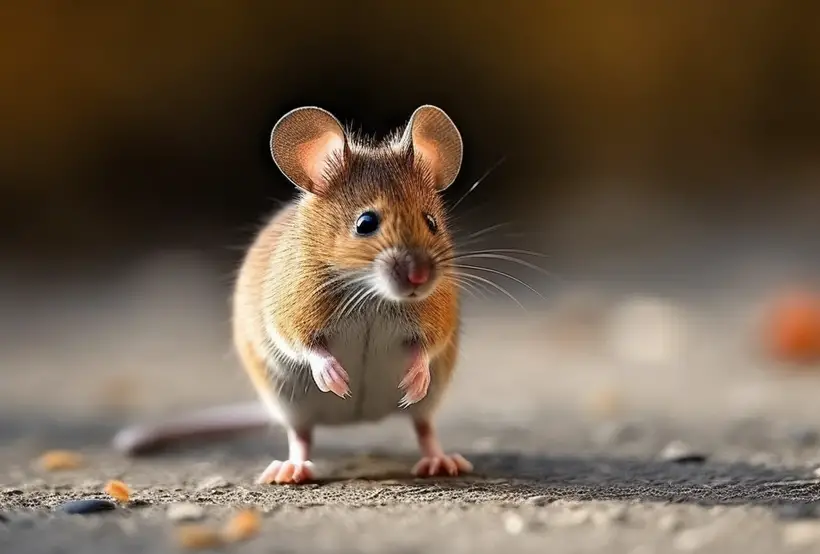How To Get Rid Of Mouse Urine Smell?
You cannot ignore the pungent smell of mouse urine, especially since it tends to get stronger as it dries up. Apart from staining surfaces, it also spreads to other areas in the house.
So, how do you get rid of mouse urine smell? Here is how to get rid of that effectively:
- Start by protecting yourself
- Identify the source of the odor
- Air out the area to allow some of the smell to escape
- Disinfect the affected area and neutralize the smell
- Lastly, prevent future urine odor by deterring mice from entering your home
These steps are quite practical when done correctly. Below is a deeper discussion of the process and what each step entails.
How To Get Rid Of Mouse Urine Smell?
Mouse urine leaves a strong, unpleasant odor behind that is difficult to remove. If left untreated, the smell can linger for months and spread to other areas. Addressing the smell as soon as possible is essential to avoid the odor permanently setting into fabrics, wood, and other porous surfaces.

Below are the steps to identify where the urine is coming from and properly treat the affected areas to eliminate mouse urine smells for good.
Step 1: Protect Yourself Properly
- When dealing with mouse urine, it is crucial to protect yourself adequately to avoid any health risks. The chemicals and substances you’re also about to use may harm your body.
- It is advisable to wear thick rubber gloves, protective goggles, and a face mask covering the nose and mouth area.
- For added protection, cover your clothing with an apron or overalls. Isolate any children or pets from the cleaning area as well.
Step 2: Identify The Source Of The Odor

The first step to ridding an area of mouse urine odor is to identify where the smell is coming from.
- Carefully smell around the affected space to pinpoint the source.
- Look for evidence of mouse droppings or tracks leading to and from specific spots.
- You may also lift up appliances or furniture pieces to check underneath.
- Switch off the room lights and sweep the blacklight around. Depending on how recent the urine is, the stains will glow either light blue or yellow under the UV rays.
Step 3: Air Out The Area
Once you’ve identified the source of the odor, it’s time to start airing out the affected space.
- Open any windows wide if the weather permits to increase ventilation and airflow.
- You can use fans to circulate the air and help disperse odors more quickly.
Step 4: Disinfect The Affected Area
Cleaning with a disinfectant has different approaches depending on whether the stained surface is hard or soft.
- Use a disinfecting cleaner or disinfectant wipe for hard surfaces like wood floors, concrete, tile, etc.
- Allow the disinfectant to soak in before wiping it away.
- Bleach solutions can also be effective but are less ideal for wooden surfaces as they may cause damage over time.
- Use a steam cleaner or steam generator with a wide-head attachment capable of putting out high heat. Slowly go over the entire affected area, keeping the steam nozzle no more than an inch away from the surface.
- The sustained heat from steaming helps break down urine crystals and sanitize deep into fabrics to eliminate odors at their source.
Whether using disinfectants or steam, focus cleaning efforts on any spots where you identified the odor was strongest. Thoroughly disinfecting these primary stain sites will be key to overcoming lingering urine smells.
Step 5: Neutralize The Smell
At this stage, your priority is choosing an effective odor neutralizer to overcome any remaining urine smells embedded in surfaces, even after disinfecting and cleaning.

There are a couple of highly effective options to consider.
- Option 1: Use a natural odor neutralizer like baking soda, white vinegar, or an enzyme-based cleaner.
Baking soda has mild alkaline properties that help absorb odors. You can make a paste with baking soda and water and scrub it onto affected areas, leaving it to fully dry.
Vinegar and enzymes work similarly by breaking down the compounds in urine smells on a molecular level. Apply the neutralizer thoroughly on the affected region, giving it time to work.
- Option 2: Use a heavy-duty odor eliminator containing materials like natural odor counters or oxidizers.
Look for an enzyme-based cleaner formulated for skunk spray, urine, or fire/smoke remediation from a home or pet supply store.
While costing more initially, these purpose-built odor counters offer a more surefire solution for complete odor removal. They will also save you time and follow-up treatments versus weaker formulas.
Prevent Future Mouse Urine Odor
It’s important to take preventative measures to ensure the problem doesn’t reoccur. Here are some tips:
- Prevent mice from entering your house: Seal any cracks, holes, or other entry points around the perimeter of your home. Use caulk or steel wool to fill holes larger than a quarter inch. Trim back landscaping and remove debris where mice may take shelter.
- Install mouse traps or glue traps: Set them near suspected mouse activity areas inside. Check them daily and dispose of any mice caught humanely. Trapping deters more rodents from entering your home.
- Remove attractants: Remove mice attractions such as food, water, and nesting materials open that encourage mice to dwell within your home.
- Use repellants: Get scented or ultrasonic repellents and set them up near problem areas as a further deterrent. Natural scents like peppermint or cinnamon, as well as high-frequency noises, are off-putting to mice.
- Do regular inspections: Inspect your home regularly for signs of mice, like droppings or gnawing, and act quickly by cleaning and setting traps if they reappear.
What Are The Dangers Of Mouse Urine?

Mouse urine poses several dangers to human health apart from the smell. It can contain harmful viruses and bacteria that may cause diseases.
- One of the major health risks associated with mouse urine is Hantavirus infection. Hantavirus is known to be carried by mice. It can be spread to humans through contact with or inhalation of aerosols from infected mouse urine, droppings, or nesting materials.
The early symptoms of Hantavirus pulmonary syndrome (HPS) include fatigue, fever, muscle aches, and headaches. As the disease progresses, it can lead to serious respiratory complications and even death in about 38% of cases.
- Other diseases that can potentially be transmitted from mouse urine include lymphocytic choriomeningitis, tularemia, salmonellosis, and leptospirosis.

Lymphocytic choriomeningitis virus (LCMV) found in house mice can cause lymphocytic choriomeningitis (LCM). It presents as flu-like symptoms initially but can later lead to meningitis or encephalitis.
- Tularemia, caused by Francisella tularensis bacteria. It can cause pneumonia if inhaled or glandular infections are transmitted through the skin.
- Salmonella bacteria from mouse urine can contaminate surfaces and food, potentially resulting in salmonellosis. It presents symptoms like diarrhea, fever, and abdominal cramps.
- Leptospirosis, transmitted through contact with the urine of infected rodents like mice, can cause liver and kidney damage in severe cases.
FAQs
Here are some questions you might be interested in that are closely related to how to get rid of mouse urine smell.
Q1. Will Hydrogen Peroxide Help Get Rid Of Mouse Urine Smell?
Yes, hydrogen peroxide can help get rid of mouse urine smell. Hydrogen peroxide works to break down the organic compounds that cause urine odors by oxidizing them.
Apply hydrogen peroxide directly to the affected area and let it sit for a few minutes. Blot dry to eliminate the urine smell through the oxidation process.
Q2. Do Mice Pee In The Same Place?
Mice do not have a designated place to urinate. They will instinctively eliminate waste wherever they happen to be moving about, sometimes even within their nests. So urine and feces can be scattered throughout where mice live and travel.
Conclusion
The strong, pungent smell of mouse urine can be a nuisance and lead to potential health risks if not taken care of. Effective removal requires identifying affected surfaces, airing the area, disinfecting, and neutralizing the smell.
It’s necessary that you take measures to prevent future smells from mouse urine. These include sealing entry points, trapping, removing attractants, and using repellants, which should be considered. With the right methods, you can eliminate the unwanted smell and prevent future odor issues.




